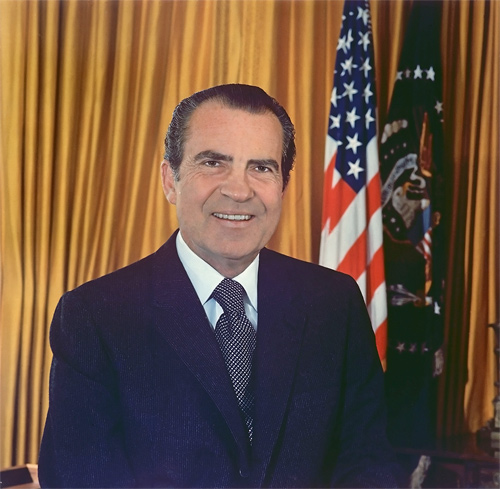
Source: Richard Nixon, White House Photo Office, Wikimedia
The Gulf of Tonkin Resolution enabled Presidents Lyndon B. Johnson (1963-1969) and Richard Nixon (1969-1974) to carry out military operations in Vietnam for nine long years. In all that time, Congress never actually declared war against the North Vietnamese (Vietcong). Finally, after committing hundreds of thousands of U.S. troops to Vietnam, growing public discontent over the war, and new revelations that President Nixon was secretly bombing Cambodia, Congress decided to take back its power.
In 1973, Congress began work on a new resolution that would enable them to gain control over the President's use of military force. They called this resolution the War Powers Act. The War Powers Act of 1973 did three important things:
The War Powers Act was vetoed by President Nixon. Congress overrode his veto with a two-thirds vote and quickly pushed it into law. Suddenly, war powers had tipped back in favor of the legislative branch.

Source: Richard Nixon, White House Photo Office, Wikimedia
How did the War Powers Act tip the scale back in favor of the legislative branch?
![]() Click and drag the powers of the legislative and executive branches under the War Powers Act to the appropriate places on the scale.
Click and drag the powers of the legislative and executive branches under the War Powers Act to the appropriate places on the scale.
Wrap up…
Today you have learned about how the Vietnam War tipped the scale of war powers back and forth between the legislative branch (Congress) and the executive branch (President). The War Powers Act still affects us today. The military conflicts in Iraq and Afghanistan required that President George W. Bush seek authorization from Congress before using any armed forces.